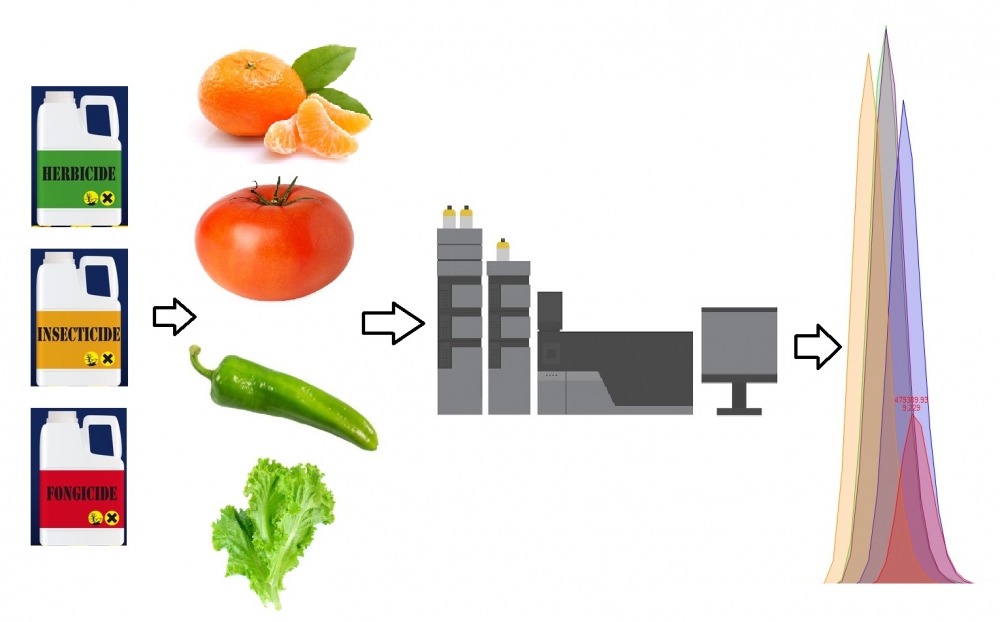JOURNAL 3081
Records of Agricultural and Food Chemistry
Year: 2024 Issue: 3 Special Issue: Abstracts 3rd. TCS, International Food Chemistry Congress February 29-March 03,2024 Antalya Türkiye
p.30 - 30
Viewed 1254 times.
-
Gülden Hazarhun

-
Burcu Gumul

-
Busra Maden

-
Kubra Ayyildiz

-
Simge Ertas Ozkan

-
Ecem Ezgi Arabaci

-
Aysegul Kumral

-
Nabi Alper Kumral

GRAPHICAL ABSTRACT

ABSTRACT
LC–MS/MS methods are widely used for pesticide analysis, because of their high sensitivity and selectivity with short analysis time. Nevertheless, LC–MS/MS has some disadvantages owing to the matrix effects. Matrix of the sample has a remarkable impact on the sensitivity and reproducibility of trace analysis of the pesticides [1]. The signal intensities of some pesticides, namely atrazine, avermectin, benzobicylon, bifenazate, bupirimate, chlormequate, cyromazine, fluopicolide, fluxapyroxad, terbuthylazine, terbutryn, triazophos and valifenalate, could be affected by different food matrices. In the current study, the effects of four different matrices such as citrus fruits, pepper, tomato, and lettuce were demonstrated during the analysis of 13 pesticides using the QuEChERS procedure and LC-MS/MS [2]. The multi-residue analysis of the 13 active compounds on tomato matrix was found compatible with the SANTE/11312/2021 Guidelines. [3]. 11 of analysed pesticides from pepper, tomato and lettuce showed negligible matrix effects (−20–20%) compared with the responses obtained in acetonitrile. But, in all matrices signal suppressions of 69.34-80.11% and 36.91-55.71% were detected for chlormequate and cyromazine respectively. In addition, significant signal suppressions were observed for 10 pesticides in citrus fruit samples. The rates of signal suppressions for atrazine, avermectin, bupirimate, chlormequate, cyromazine, fluopicolide, fluxapyroxad, terbuthylazine, terbutryn, triazophos and valifenalate were detected as 22.85, 84.57, 80.11, 55.71, 91.38, 93.95, 42.64, 50.99, 52.53 and 50.02%, respectively, for citrus matrix. However, a strong signal enhancement (38.46 and 236.95%) occurred for a bifenazate metabolite (bifenazate diazen) for pepper and lettuce matrices. Changing some steps in the extraction process can help to improve sensitivity of the analysis. [4]. For that reason, profiles of diluted citrus extracts were generated in this study. Dilution for citrus fruits led to a significant decrease in the matrix effects. With the modified extraction methods, the rates of signal suppressions were significantly reduced for atrazine, avermectin, fluopicolide, terbuthylazine, terbutryn and triazophos in citrus samples.
KEYWORDS- Analytic method
- fresh foods
- matrix effect
- pesticide residue
- QuECHERS method